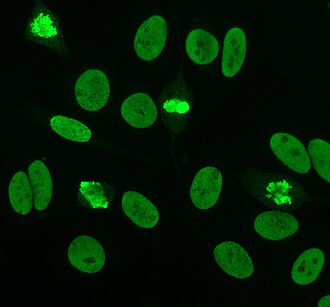Wu L, Huang D, Yang Y, Wu W. Combined Screening for Serum Anti-Nuclear and Anti-Aquaporin-4 Antibodies Improves Diagnostic Accuracy for Distinguishing Neuromyelitis Optica from Multiple Sclerosis. Eur Neurol. 2014 Jul;72(1-2):103-108. [Epub ahead of print]
Methods: Chinese patients with NMOSDs (n = 74) or MS (n = 49) were screened for serum ANAs (all patients) and AQP4-Ab (58/74 NMOSDs and 45/49 MS patients). The NMOSDs group included patients with neuromyelitis optica (NMO; n = 53), recurrent longitudinally extensive transverse myelitis (rLETM; n = 20), and recurrent optic neuritis (n = 1).
Results: The seroprevalence rate for ANAs was significantly higher in the NMOSDs group than the MS group (45.9 vs. 2%; p < 0.01). Similarly, AQP4-Ab seroprevalence was higher in NMOSDs than MS (56.9 vs. 4.4%; p < 0.01). Sensitivities and specificities for diagnosing NMOSDs were 51.7 and 97.8% using ANAs, 56.9 and 95.6% using AQP4-Ab, and 74.1 and 93.3% using both assays. Conclusion: Patients with NMO or rLETM had higher ANA seroprevalence than MS patients. Combined detection of both ANAs and AQP4-Ab improves the sensitivity of NMOSDs diagnosis without compromising specificity.
Neuromyelitis optica or "Devics MS" appears to require a different treatment compared to "classical" MS. Antibodies against a water channel calle aquaporin 4 is thought to be a target in NMO if you also consider anti-nuclear antibodies then the chances of spotting NMO is higher.
